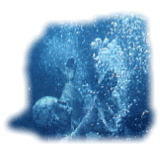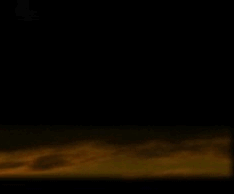|
Written originally around Y2K, this page is re-uploaded March 2024 and updated.
Bimini was nothing more than an obscure island 55 years ago. It was a small, marshy mound only a few feet above sea level about 50 miles from the east Florida coast. It is the gateway to the Bahamian islands, if coming from Florida. But it was hardly ever a key island, even to Bahamians. If anybody knew about Bimini, it was only fishermen.
In 1882 US Congressman Ignatius Donnelly excited modern audiences with the probability that Atlantis had been real and was truly a continent that had subsided into the Atlantic. He viewed all ancient cultures as a rebuilding of Atlantis’ high state of Bronze Age culture. The Amerindian cultures of America particularly preserved an Atlantean footprint. “We can therefore readily believe that commercial intercourse between Atlantis and Yucatan, Honduras and Mexico, created colonies along the shores of the Gulf which gradually spread into the interior, and to the high table lands of Mexico. And, accordingly, we find, as I have already 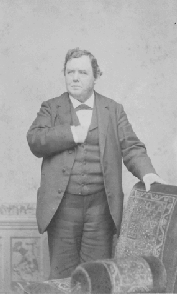 shown, that all the traditions of Central America and Mexico point to some country in the East, and beyond the sea, as the source of their first civilized people; and this region, known among them as ‘Atzlan,’ lived in the memory of the peoples a beautiful and happy land, where their ancestors had dwelt in peace for many generations.” shown, that all the traditions of Central America and Mexico point to some country in the East, and beyond the sea, as the source of their first civilized people; and this region, known among them as ‘Atzlan,’ lived in the memory of the peoples a beautiful and happy land, where their ancestors had dwelt in peace for many generations.”
Ignatius Donnelly— there are good reasons why he is dubbed ‘the father of alternative history’; equally why the occult devoured his work.
Donnelly’s voluminous work inspired illustrators and those who sought to unravel some of ancient man’s sudden origins and Biblical motifs. After all, the first civilizations and the Bible spoke of great cataclysms like a flood wiping out the mother culture. His work especially inspired spiritualists who sought these same truths via very unconventional means, especially the truth surrounding that enigmatic Genesis 6:4— “The Nephilim were on the earth in those days— and also afterward— when the sons of God went in to the daughters of men, they bore children to them. These were the mighty men (heroes) who were of old, men of renown.”
As we saw in Atlantean Crystals, the Atlantis of spiritualist Edgar Cayce, the “Sleeping Prophet,” was nearly identical to Donnelly’s except Cayce made it more than an advanced Bronze Age culture. He also said the Great Bahama Bank was the last portion of this super technological Atlantis to sink. He specifically named the obscure Bimini in 1933. Before we get to the full reading, let’s preface it with another with which it is frequently paired:
“Poseidia will be among the first portions of Atlantis to rise again — expect it '68 and '69 — not so far away.” (June 28, 1940)
Poseidia we know is the Great Bahama Bank. And now the specific prediction of Bimini. It is not so general as above. It describes the ultimate conductor of power, the Tuai Stone crystal.
As for a description of the manner of construction of the stone: we find it was a large cylindrical glass (as would be termed today); cut with facets in such manner that the capstone on top of it made for centralizing the power or force that concentrated between the end of the cylinder and the capstone itself. As indicated, the records as to ways of constructing same are in three places in the earth, as it stands today: in the sunken portion of Atlantis, or Poseidia, where a portion of the temples may yet be discovered under the slime of ages of sea water — near what is known as Bimini, off the coast of Florida. (December 20, 1933)
It was, according to Cayce’s prophecy anyway, not necessary for the remains of any temple to be discovered around Bimini in 1968, but considering the lively interest that followed the first reports of Atlantis rising in 1968, we can understand how the Bimini discovery was quickly linked. The first discovery was off Andros Island by Trigg Adams and Bob Brush in July during a routine over flight. The outline below the shallows was a perfectly geometric rectangle suggestive of the foundation of some building sunk below at some ancient time. A cascade of sightings followed by others.
A.R.E. members— Cayce’s followers— were looking for ruins and it’s not surprising that with so many eyes gazing where no one else would think to do so that many oddities were seen thereafter over the summer months. But Bimini’s discovery on Labor Day was by diving, and it has been extensively examined thereafter.
Is it a temple with records or some blueprint that preserves the device that can harness the greatest power of natural energy— some giant crystal laser?
Skeptics say no. Some don’t even believe it’s a manmade artifact. By Cayce’s prophecy, the “Road” does not have to be a temple. No year of rediscovery surrounded the Bimini “temple.” What we must establish here— is it manmade or natural?
The accompanying illustration is drawn by me, based on my own laborious examination. Pictures, often by others who have lent them to me for presentation purposes, will accompany relevant points. Reflecting the evidence and arguments I present here, I personally believe it is manmade. Now, as to whether this is part of Atlantis, anybody’s Atlantis, the reader will have to decide for themselves.
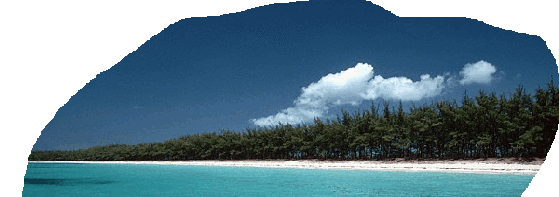
The water was unusually clear this humid Labor Day, 1968. Zoologist J. Manson Valentine, in company of Harold Climo, Jacques Mayol, Robert Angove, and Dmitri Rebikoff, dived into the sparkling 30 foot depths off Paradise Point, Bimini. The clear day allowed the azure blue waters to highlight darker forms of what appeared to be a manmade road or fallen wall.
Gliding over this darkened form revealed it to be
made of huge polygonal stones which seemed to
have been joined together in the same curious
fashion as the Inca walls of Peru. Even
though the stones had pillowed (edges
rounded by the currents), the
interrelating angles of the
joints were obvious.
Some stones were
massive
in length,
3 times that
of a man’s height,
and now laying prostrate
but in geometrical position
with other stones. An average
average for many stones
was 8 x 10 feet, many of these
lying neatly beside each other
like rows of troops at inspection.
As the reader can see, the “Road”
is shaped like an inverted “J.” It extends
for some 1,200 feet about half a mile off
Bimini’s northwest shore. Nearby “fallen
walls” start and stop without any reason,
giving a perplexity to the entire meaning
of the site. Expanding on these discoveries,
successive dives revealed several extensions
and geometric patterns, either identified
by the bottom growth tracing a buried
outline or by the lack of bottom growth
in an area of dense underwater vegetation.
Dr. David Zink’s expeditions in 1975
identified many features of the site with other
prehistoric megalithic sites around the globe.
A more minute study revealed the stones are
comprised of harder beach rock than the
local beach rock off Paradise Point.
Coring analysis also showed significantly higher
strontium in the megalithic blocks compared to the
seabed underneath.
The “square stone,” central to the arrangement.
Chemical tests of some stones reveal adjacent
stones were formed in “different chemical
environments.” In one example, one stone’s
cementing was defined by “aragonite crystals”
and another by “sparry calcite.”
The “chockstone.” See red arrow far right.
A number of stone arrangements indicate an
association with other worldwide megalithic sites.
Red arrow, right, marks the location and
direction of the “arrow stone.”
Context is also important. East Bimini also
contains manmade mounds, an indication the
site was venerated; for Atlantologist, perhaps
by some subsequent Amerindian culture. For
those taking a moderate view, it was only a
sacred Indian site. The mound in the photo
taken by Bruce Gernon shows it is by the
famous healing well studied by
Leicester Hemingway.
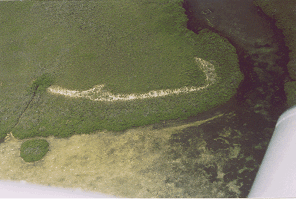
The “Road” does not align with natural
stresses in the beach rock layer upon which
they sit.
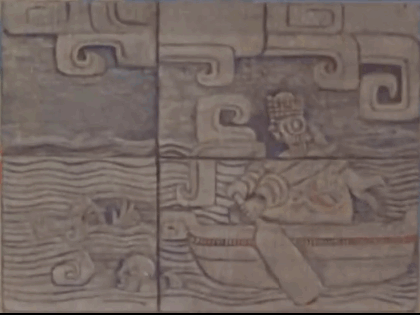
Again, context is important. Amerindian cultures
speak of coming from the east and that there had
been great upheaval. This bas relief stylistically
shows an Amerind fleeing volcanic eruptions
and collapsing temples.
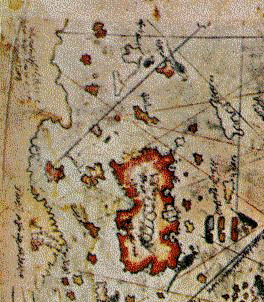
Again, the stones do not stand alone, literally
and in time. A blowup of an island representing
the Bahamas on the Piri Reis map (1513). The
cartographer marked a salient feature of the area as told
from returning explorers. It is a row of polygonal stones
In this case, apparently seen on land.
Zink also noted there is the 14 and 5
stone sequence in sections of the wall,
a feature of some megalithic sites.
The remains of this once massive structure must be paltry compared to its past. Only inferences can be drawn as to what it was, but it is interesting to note that the most ancient cultures of the Andes also built their massive temple complexes in the shape of a giant U, something of which the “J” shape of the remaining structure off Bimini seems to suggest.
This would mean it may indeed have been a temple. But built by whom? When?
A.R.E. adherents are quick to draw connections between the style of construction of Bimini and the many other finds on the Bahama banks with the Pre-Incan in Peru and the Mayan in Central America. This is understandable since Edgar Cayce echoed Donnelly in “life readings” and said survivors of Atlantis colonized such locations and brought with them their advanced 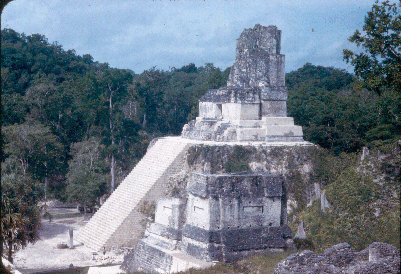 technology, at least in terms of architectural skill and engineering, though the design of the Tuai Stone and the apparatus necessary to channel energy through it was not one of them. technology, at least in terms of architectural skill and engineering, though the design of the Tuai Stone and the apparatus necessary to channel energy through it was not one of them.
Tikal of the Maya.
However, from a more moderate standpoint, why could Bimini not represent the opposite? That it was a colony of an Amerindian culture, possibly erected because of the healing well.
Atlantologists would argue that Tiahuanaco, considered one of the
oldest cities of the Americas, shows too high a sophistication not to have
been built by an established science. This sounds like technologically
advanced survivors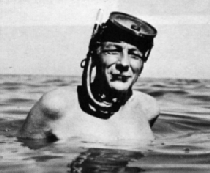 of a past cataclysm. of a past cataclysm.
The same applies to the “pre-Incan,”
which the Bimini Road much more
closely resembles.
J. Manson Valentine
The massive “J” of the Bimini Road
does not stand on its own. “Roads” or
fallen “walls” are nearby and somewhat
parallel to the giant structure. These
also how signs of other megalithic prehistoric sites in the placement
of their blocks. Interestingly, the above outsert from the Piri Reis
Map shows that other stone structures are indicated on the island.
Of the 2 “roads” illustrated here, the one furthest has been
frequently photographed, conveying clearly how the stones merely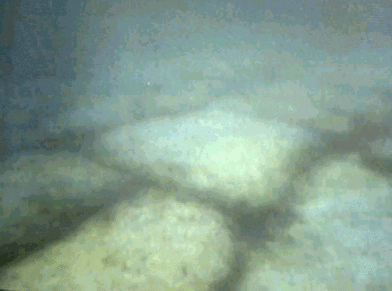
sit on the sea bottom, as if a wall toppled.
Photo, right, is of corresponding stone
by red arrow in illustration.
Below, aerial showing the “J” of the Bimini Road. This also reveals parts of 3 parallel roads on its left. (Photo courtesy of Bruce Gernon).
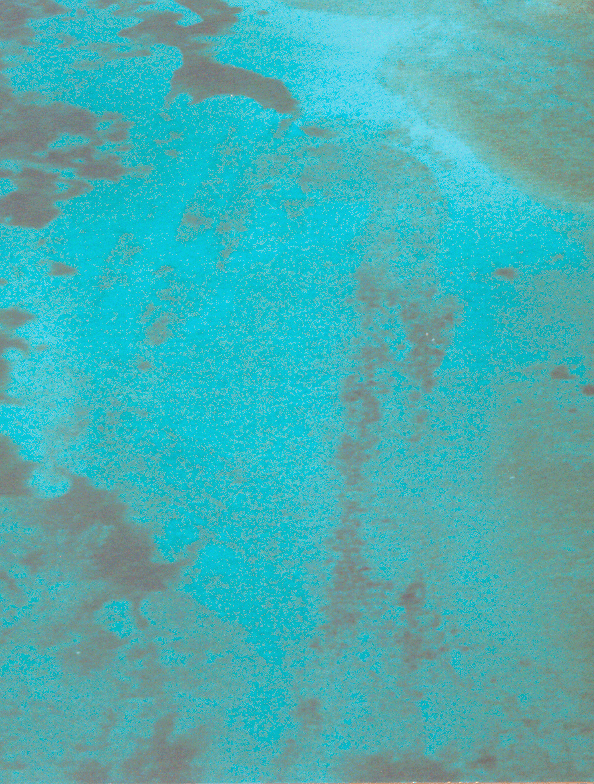
A clear photo of a section of the Road. (Photo courtesy of Bimini Brown.)
Whether you believe in Arthur Posnansky’s dating methods or the modern, revised (considerably downward) estimations of Tiahuanaco’s age, a study of that fascinating site is not without its unexpected psychic links to Bimini, and this link, though tenuous, was made before Cayce’s trance readings even began.
Again, we turn to Percy Fawcett, as we did in the previous page Atlantean Crystals. H. Rider Haggard had given Fawcett a small black basalt idol 10 inches high. He had found it in Brazil. Fawcett tried to find someone who could establish its origins, but lamented how no one knew what its provenance was. He was very curious about it for a reason. “There is a peculiar property in this stone image to be felt by all who hold it in their hands. It is as though an electric current were flowing up one’s arm, and so strong is it that some people have been forced to lay it down. Why this should be I don’t know.” Finally, he took it to a psychic for Psychometry. (See Atlantean Crystals for the reading). The psychic linked it to “Atlanta,” and even saw its destruction and subsidence in the Atlantic.
A hundred years have past since then that have seen lots of excavations. From his description of it, (24 “characters” around anklets and on the breastplate) it is not difficult to associate it with the priest idols of Tiahuanaco, and possibly to Wiracochas himself. On the Sun Gate he is surrounded by 24 characters as part of a “calendar.” So in a very unintended way, the psychic linked Tiahuanaco to ancient Atlantis. And Fawcett, we must remember, linked the idol to the ancient cities he had heard were lying buried in Brazil’s jungles. These were said to have crystal columns and discs and a “light that never goes out” suggesting some form of unknown energy.
Was the psychic merely inspired by adaptations of Ignatius Donnelly’s fantastic book? If so, many others were too. Fawcett writes: “Other psychometrists held the stone figure, and gave impressions tallying closely with the above [See Atlantean Crystals]. At all events, whatever its story may be, I look on it as a possible key to the secret of the Lost City of my quest, and when the search is continued it will accompany me. The connection of Atlantis with parts of what is now Brazil is 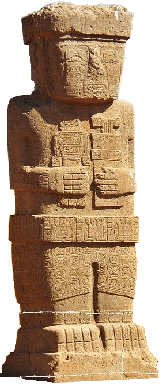 not to be dismissed contemptuously, and belief in it — with or without scientific corroboration — affords explanations for many problems which otherwise are unsolved mysteries. Later on I shall have much more to say about this subject.” not to be dismissed contemptuously, and belief in it — with or without scientific corroboration — affords explanations for many problems which otherwise are unsolved mysteries. Later on I shall have much more to say about this subject.”
Priest idol at Tiahuanaco. The container with steam coming from it actually holds the hallucinogenic. It seems the Tiahuanaco priesthood was much like our counterculture which adapted Henri Bergson’s philosophy of the brain and used drugs to open portals to the universal consciousness, to draw a comparison anyway. Just what really did the priests see in these states and how did they direct the people through it?
Indeed much more can be said, but this is not the page for it. But we have to touch on a certain amount of context.
Edgar Cayce’s readings added something Fawcett’s psychics did not. He had declared that Atlantis had overcome gravity and had fantastic flying devices which helped Atlantis colonize Peru and Central America. Brazil didn’t figure in Cayce’s readings for this very reason. For Fawcett and Donnelly, Atlanteans fled by ship. Thus Brazil seems a likely first stop to rebuild. For Fawcett, this meant the most fantastic cities, closest in concept to Atlantis, should be found in the jungles. For Cayce’s followers, believing Atlantis had flight, this explained what could be easily seen. Tiahuanaco, then believed to be the oldest city in America, was built at an impossibly high altitude and was different from the architecture of succeeding Amerindian societies. Its builders were supposedly white, bearded men— by theoretic adaptation, Atlanteans who came by air craft.
Tiahuanaco is a strange archeological site, whether you hold the romantic or the orthodox viewpoint. And it is possible that much of the intricate fitting stones (“H” stones) are actually geopolymer i.e. manmade concrete blocks. The blocks have long astounded physical science, and psychics long before have linked Tiahuanaco, however implicitly, to Atlantis.
Tiahuanaco is very superior to the Inca stone masonry that followed. This may not reflect a lost science of casting polymer stone in wood molds but the need to prevent earthquake damage. Incan polygonal stone walls do not easily dislodge whereas Tiahuanaco’s perfect right angled squares have all tumbled from the Andean shakers. Thus Incan stone masons were not necessarily inferior ones, just practical ones.
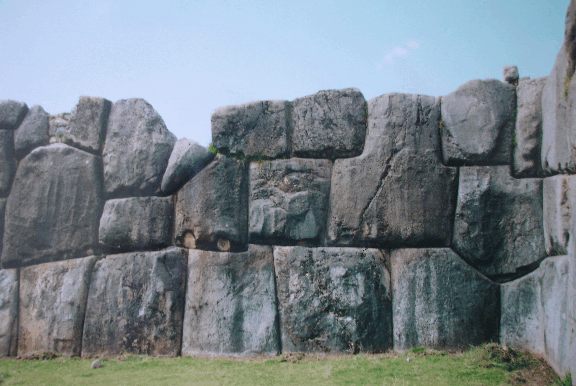
Sacsahuaman, Peru. Note the intricate and tight fitting joins of the blocks. The Bimini Road resembles Incan architecture the most. (Photo: Judith Marx)
The Inca themselves may have known how to melt stone, at least make it soft around the edges before slipping it into place, thus explaining the intricate fitting joins of very awkward shaped polygonal blocks. Brian Fawcett, Percy Fawcett’s one surviving son, in editing his father’s manuscript before publication, mentioned a personal experience while in Peru. After an old Incan jar, thought to be full of locally made liquor, had been shattered on a rock, he noted something surprising happened. “About ten minutes later I bent over the rock and casually examined the pool of spilled liquid. It was no longer liquid; the whole patch where it had been, and the rock under it, were as soft as wet cement! It was as though the stone had melted, like wax under the influence of heat.”
He had heard of such sciences amongst the ancient Incas, and those who have tried to uncover the chemical process have thought it was some mixture derived from lichen, which have the ability to soften stone, one reason why certain species are cut away from crawling up brick buildings and homes.
The Bimini Road actually most resembles Incan stone masonry. As such, it seems much later than Tiahuanaco, and to an extent inferior. Why then could Bimini not be a byproduct of South America rather than the other way around?
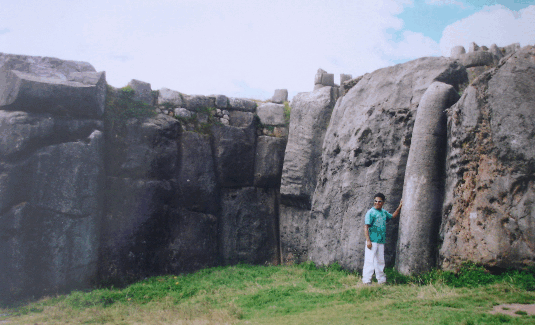
Like Incan architecture, the Bimini Road is made up of many odd shaped stones lying next to each other, fitted neatly. (Photo courtesy Judith Marx)
A middle ground is a wise stance to take at present. The Spanish destroyed so much of Amerindian history that it is difficult if not impossible for us to put back together how exploratory the Central American civilizations were. Study of turquoise has proven that the Aztecs traded with the Apache for it, establishing in New Mexico and Arizona 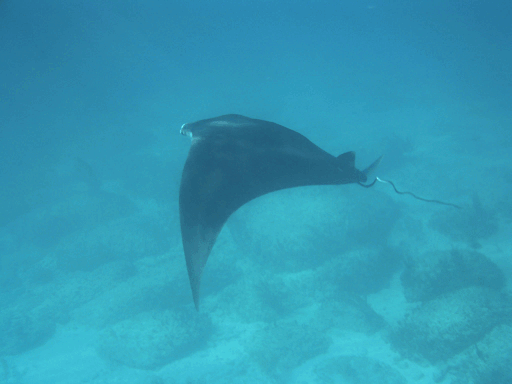 astronomical and engineering skills most likely in return. astronomical and engineering skills most likely in return.
A manta glides over part of the Road. (Photo courtesy of Bimini Brown.)
The same can be suggested for the ruins on the Bahama Banks. The healing well may have been viewed as a holy site or even commercial site. The area may have been considered critical for seagoing ventures along the American coasts (due to the Gulf Stream). It is a recorded fact that 3 Amerindian sailors popped up in Roman Spain and their presence in a canoe was recorded by the Roman proconsul, though he nor any of the people knew where the red men with thick, “coarse hair like a horse’s mane” had come from.
For Atlantean believers, Egypt was Atlantis’ main and most successful colony. Anything ancient Egypt is the nodal point for all in the occult. Atlantologists do have certain facts to support their views, but they interpret them with Donnelly and then with Cayce. Surprisingly, occultists know little of the history of the fabled land, but they do adapt some tantalizing inconsistencies.
Ancient Egyptians were not an homogeneous people, and Egyptian civilization suddenly bursts forth, it is true. Referring to the period of 3400 B.C., Walter Emery writes (Archaic Egypt): “Authorities are divided in their opinions as to the reason for this sudden cultural advance, but it would seem probable that the principle cause was the incursion of a new people into the Nile valley, who brought with them the foundation of what, for want of a better designation, we may call Pharaonic civilization. Whether the incursion took the form of gradual infiltration or horde invasion is uncertain, but the balance of evidence . . .strongly suggests the latter.”
Many Egyptologists regarded this people as having come into Egypt from the Red Sea, for they pop us first at Edfu and expand their conquest of the whole land from this point. It is here that the cult of Horus can be traced, and these invaders were often referred to as the “Followers of Horus.” For centuries they were a civilizing force. The pharaohs and royal dynasties came from this people. By the Second Dynasty the native Egyptians started adopting the customs of their invaders— e.g. mummification.
Emery does touch on a puzzlement: “The cultural connexion between the Nile and the Euphrates at this early period is beyond dispute and generally accepted. But whether this connexion was direct or indirect, and to what extent Egypt was indebted to Mesopotamia, are still open questions. That it was not a slavish copying is obvious, and indeed in many aspects, particularly in architecture, Egypt’s version of what is certainly a common conception is superior. This does not suggest the pupil or borrower; nevertheless we are faced with the fact that Mesopotamia can show a background of development whereas Egypt cannot. Therein lies the former’s claim to be the originator of architectural conceptions such as the panelled facade. But in contemporary structures of this type, of more or less contemporary date, on the Euphrates and the Nile, it becomes apparent that Egypt’s superiority is beyond question.”
A beginning for Egypt in a “dynastic people” dominating the indigenous people accentuates a point for us here. These native or original Egyptians appear to be the same people as the people they referred to as “outlanders.” Essentially, these were rednecks living outside the Nile valley with their own coarse type of Egyptian language. In ancient Egyptian “outlander” is berber. It is true the Berber language was similar to ancient Egyptian. They roamed over northern Africa and now DNA seems to imply and confirm so much more.
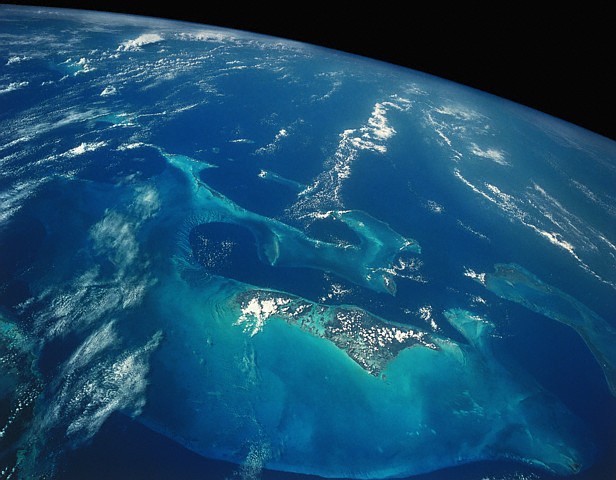
Geographically, the Great Bahama Bank plays into the picture of Atlantis, which Western culture has viewed as an island that sank. If the Atlantic Ocean table was just a 100 feet lower, the Great Bahama Bank would be a huge island. Edgar Cayce, however, called this “Poseidia” and said it was the last part of Atlantis to sink. Believers associate this final deluge of Atlantis with the one that inspired our ancient traditions of a single cataclysm. (Photo by Corbis, used under license.)
It seems the Berber were great sailors and even became the culture of Tartessos in ancient Spain, the Tarshish of the Bible, with its great seagoing ships and stout sailors. Tartessos commanded the Atlantic, and many have often wondered if its subsidence under the sea near modern Cadiz did not help inspire Plato’s tale of Atlantis.
But Tartessos’ subsidence could have inspired much more, including stories on both side of the Atlantic. The Guanche of the Canaries were a bit of a mysterious race, and Atlantologists played to this, promoting them as having been survivors of Atlantis. DNA has proved they were Berbers. The Saami of Sweden, with their olive skin and almond eyes, have been speculated to be Asians who migrated west in ancient times. DNA has finally confirmed a North African origin— i.e. Berber.
In between these points are the megalithic sites of prehistory— the impressive Gigantia on Malta, none other than Stonehenge in England, and Carnac, France, all which could only have been reached by sea, all connected by the same megalithic style of construction. And there’s only one seagoing people who moved out from North Africa into the Atlantic. How far did the great ships of Tarshish sail?
Across the Atlantic the Amerindian cultures of Central Mexico claimed their ancestors came from the east, from the area of the rising sun. The Olmecs were the first. They were 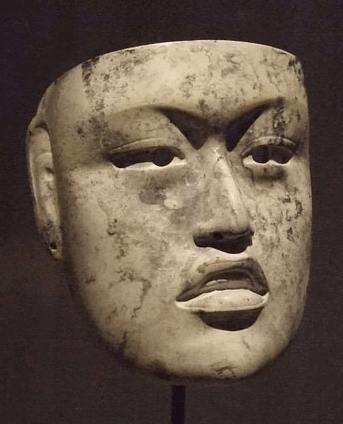 respected by all succeeding cultures. Scholars have pondered if there was an Asian connection because the Olmec portrait statuary shows almond eyes. respected by all succeeding cultures. Scholars have pondered if there was an Asian connection because the Olmec portrait statuary shows almond eyes.
Typical Olmec features.
Pictures over 100 years old of Berbers still in place in North Africa confirm many had almond eyes, like the wall paintings of ancient Egypt and, of course, like the Saami of Sweden. And DNA now tells us there’s a link between Berber and Sami and the Guanche. Is there also a link with the Olmecs?
A study of archeological remains around Cadiz, the area of ancient Tartessos, confirms great stone work and establishes that 500 years before the Romans the Tartessians had invented cement. The Olmecs also used cement.
North, South, East and West of Tartessos we find almond eyes, a knowledge of astronomy, and stupendous megalithic sites. Bimini is perhaps one of them. People look for the remains of super-Atlanteans. But could it be that all these enchanting sites are the result of the scorned rednecks of the ancient old world?
Atlantologists would stand in opposition to my inferences. They would declare that Tiahuanaco shows the exact sudden burst from nowhere as established for Egypt. They would declare the Berber to be Atlantean survivors and this explains Egypt’s sudden burst of civilized energy and superior architecture to Mesopotamia, especially in stone masonry. They would remind that the cultures around the Atlantic show a skilled megalithic beginning but those further, like Mesopotamia, show a slow development. This can be explained by Atlantean society spreading outward from the Atlantic, not toward it from the East.
I would rebut: megalithic architecture is garbage. Megalithic workmanship is crude, improvised, garbage. They could indeed haul heavy stones but they didn’t have the skill or patience to hew these stones into squares or even quarry them properly. Compared to the exquisite craft of the pyramids, palace facades, and courts of Saquarra, what are monolithic blocks stuck crudely together? I would also ask, who then were the horde invaders— the dynastic people of Egypt? They didn’t have the almond eyes and they didn’t arrive 9,000 B.C. There is much mystery to prehistory indeed, with its stories of massive cataclysm and rebuilding. To this we can all agree.
Thousands come in glass bottom boats each year to Bimini to gaze at Atlantis rising. The Bahamas probably doesn’t care. Collectively, the archipelago likes the idea of Atlantis. Maybe they’re right. Something monumental sank here ages ago. The Tartessians may have carried the story back. They may have carried it forward to Central America. So it’s somebody’s Atlantis.
|

